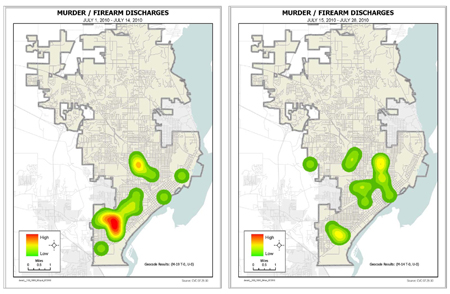According to a spreadsheet document distributed at a recent Peoria County Finance/Legislative Study Committee meeting titled “Peoria Riverfront Museum Capital Budget by Project,” updated 7/28/2010, pledges to the proposed Peoria Riverfront Museum total $23,073,484. Of that, only $6,475,076 (28%) have been collected.
In addition, whereas the County has said in the past it would only be contributing $34.5 million to the museum project from the public facilities sales tax revenues, the latest spreadsheet shows a full $40 million being contributed. While that’s the lion’s share of public money, there are also significant amounts coming from other public money pots, including the Illinois capital budget, Illinois Department of Transportation, Housing and Urban Development, Department of Energy, Illinois Department of Natural Resources, Department of Commerce and Economic Opportunity, NASA, and the Peoria Civic Center Authority. Despite all of this public help, and presuming they’ll actually collect all the pledges that have been committed over their multiple years of fundraising, they’re still looking at a budget deficit of $6,448,988.
But they’re moving ahead with construction anyway. What happened to all the money that was going to come in after the sales tax referendum passed? Remember that? When questioned as to why they weren’t making their private fundraising goals before the referendum, their response was a very confident assertion that people were waiting in line to give money, but wanted to make sure the public would support the tax referendum first. Once the referendum passed, the funds would come rolling in, we were told then.
Perhaps the most shocking thing on this spreadsheet is the total amount that has already been spent. Are you sitting down? It comes to $13,471,440. $4.5 million has been spent on architectural and engineering fees for the museum building — another $1.8+ million in fees for the parking garage. $2 million has been spent on something called “pre-opening operating support.” Almost $1 million was spent on “public awareness” — which was their campaign to make sure the $40 million tax referendum passed, so I guess that was money well spent from their perspective.
There are two line items for endowments on the spreadsheet. One shows $2.3 million “committed” but not “received” from Lakeview as a funding source. Another line item shows a $5,248,000 “endowment enhancement” which has been neither committed nor received. The endowment is important because the museum needs the interest from the endowment to cover its ongoing operating expenses. If there’s no endowment, the museum will have no cushion when facing an operating deficit — and let’s not kid ourselves, there are going to be operating deficits.
But they’re moving ahead with construction anyway, undeterred.
Oh, and they’re still counting on the City just giving them the Sears block for nothing. That land is worth $10 million according to the Build the Block website. What is the City’s budget deficit for 2011? Hmmm…. $10 million, I do believe. Wouldn’t it make sense to sell the land to the museum/county and use those funds to plug our deficit so we don’t have to lay off any more police officers? Nah, the museum is more important than public safety, right?
The conventional wisdom now is that the money fairies will sprinkle the museum with cash once it’s built. You know, once people really see the thing being built, then they’ll start contributing! They’re just skeptical that we’re not really going to build it. If we show them we really mean business, then there will be a race to see who can give the most money fast enough.
Second verse, same as the first.

